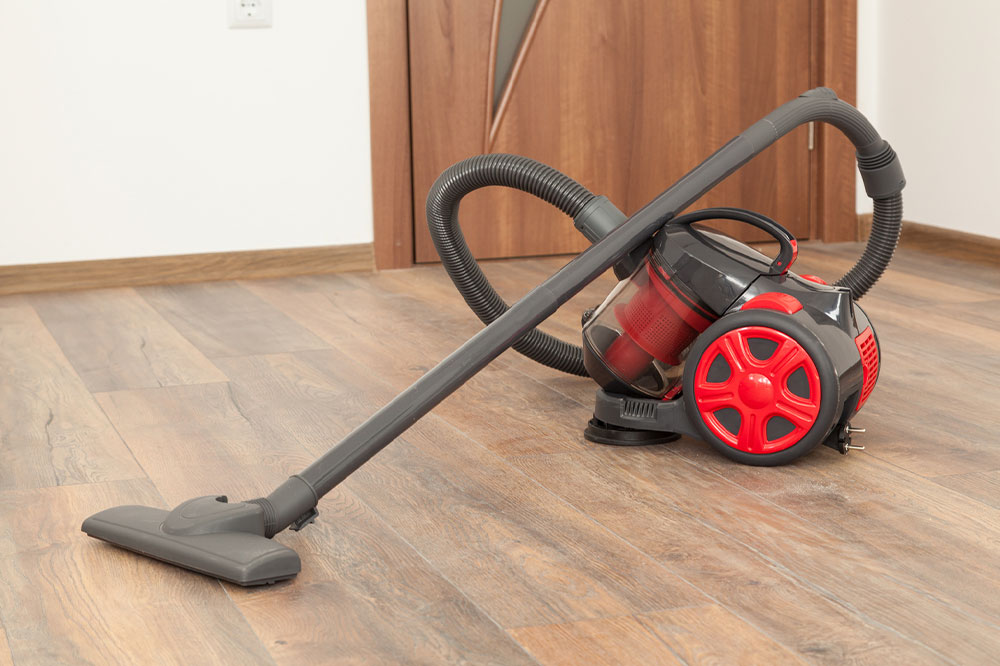Common Kitchen Appliances and How to Clean Them

Keeping the appliances clean is essential for maintaining their functionality and ensuring that they do not encourage bacterial growth and affect the health of the family members. However, cleaning appliances can be time-consuming and challenging, especially if one doesn’t know the right way of doing it. There are various cleaning hacks that can make the process quicker and more efficient. Here are some common appliances and their cleaning hacks with easily available household items.
Microwave and oven
Vinegar is a versatile household ingredient that can be used to clean various appliances effectively. For cleaning the interior of one’s microwave, one can mix equal parts of vinegar and water in a microwave-safe bowl and heat it for a few minutes. The steam generated from this mixture will loosen the grime and make it easier to wipe away. Vinegar is also great for descaling coffee makers and removing stains from stainless steel surfaces. Its acidic properties make it an excellent choice for tackling tough stains and odors.
Alternatively, one can use baking soda, which is another versatile cleaning agent found in most households. It is particularly effective for removing grease and grime. Create a paste using baking soda and water and apply it to the interior of the oven. Then, allow the mixture to sit for a few hours so that the stains loosen. Finally, wipe away the paste, which effectively takes away the grease and grime with it.
Refrigerator
Distilled vinegar mixed with water can also work wonders for cleaning refrigerators. First, one can empty all the shelves and drawers, take out the detachable ones, and wipe the shelves with a clean cloth soaked in this solution. This will not only remove the stains but also disinfect the interiors of the refrigerator and get rid of the smell. One needs to be careful to let the interiors dry out well before putting back the food. For cleaning refrigerator odors, one can place an open box of baking soda on one of the shelves to absorb unwanted smells.
Kettle
Hard water can leave a tough layer of build up or deposits on appliances that can be difficult to get rid of, especially in a kettle, which is constantly in touch with the water. These deposits can shorten the lifespan of a kettle and even lead to a noisier heating process. To combat this, one should clean the kettle’s interior every few months. It is best to avoid scrubbing since it can harm the kettle’s lining. Instead, one can either use a store-bought descaler according to the instructions or opt for a natural solution by filling the kettle with a mixture of equal parts water and household vinegar or lemon juice. The mixture takes time to work its magic, so one can let it sit in the kettle for an hour or so before boiling the water. This step can be followed by emptying the water and rinsing the appliance thoroughly and repeating the process if necessary.
Other home essentials and their cleaning hacks
Chopping boards
Chopping board stains can be easily removed using lemons, which are not only a fantastic addition to one’s favorite recipes but also a natural cleaning agent. To use it correctly, one can cut a lemon in half and use it as a scrubber to clean the stains and odor from chopping boards. One can also take a mixture of lemon juice and salt to clean up wooden boards, which tend to get smelly and soak up the chemicals from dish-washing liquids or soaps. Alternatively, one can sprinkle the board with salt and then scrub it with lemon to rinse and dry later. Rubbing a lemon half on metal appliances like faucets or stainless steel surfaces can also help remove stubborn stains and restore their shine. Moreover, one can add lemon peels to one’s garbage disposal to eliminate unpleasant smells.
Mugs and teapots
Mugs and teapots may get stained from tea and coffee. A washing-up liquid mixed with some bicarbonate of soda can work well on the stain, but one might have to manually scrub it off with a sponge. Another option to get rid of these stains is to use a solution of bleach and warm water.
Candle holders
Candle holders, especially glass ones, can quickly collect leftover wax with a few uses. To avoid the residue and restore one’s holder to its former glory, one can immerse the glass in hot water. This will melt the wax and allow one to easily get rid of it either by scooping it up or wiping it off. After this step is done, one can soak the glass in a mixture of equal parts hot water and vinegar to bring back its shine.
Cooktops
Cleaning kitchen worktops requires different approaches based on the material. The best way to maintain wooden worktops is to first dry them thoroughly and then wipe the stains with hot, soapy water. One can also use a natural mixture of vinegar or lemon with water to remove stains and then re-oil it to ensure its longevity. For stainless steel, use a clean cotton cloth and wipe off the countertop by dipping it in a little olive oil. This reduces fingerprints and gives the place a shiny, glossy look. Moreover, cooktops made of stone, granite, composite, or lamination can be wiped clean with hot water mixed with any natural cleaning soap or a disinfectant cleaner. One can also add the vinegar and water mixture ready in a spray bottle to clean cooktops and stoves and ensure the greasy or crusty chunks do not stay on for long. Having said that, it’s best to clean spills promptly, avoid the use of any harsh chemicals, and follow manufacturer’s guidelines while using any cleaning products for optimal benefit.






